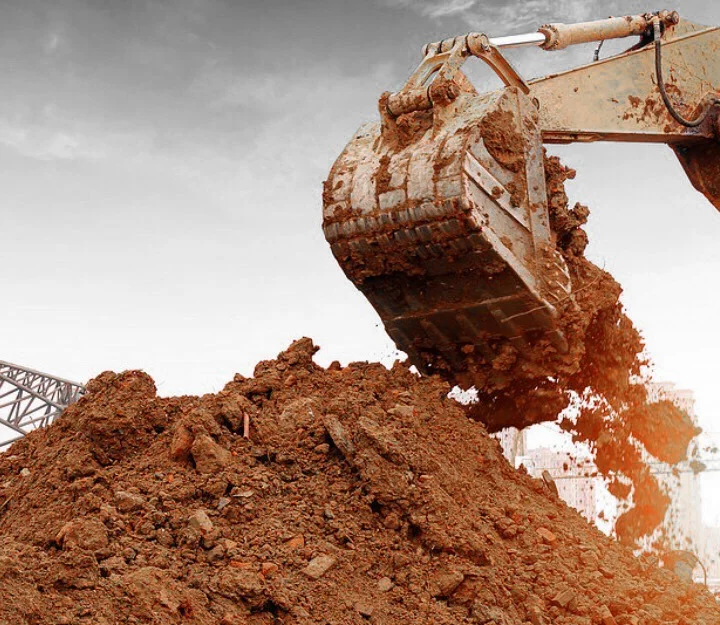Revealing the Art of Excavation: Pro Tips for Safe and Productive Excavating
In the world of excavation, the mastery of efficient and risk-free excavating is an art type that calls for adherence, precision, and expertise to well established techniques. As soil is turned and earth is moved, the intricacies of excavation disclose themselves, demanding an eager understanding of equipment, soil make-up, safety and security protocols, and ecological factors to consider. The know-how needed to navigate these elements effectively can imply the distinction between an effective excavation task and a prospective calamity. By unraveling the layers of this complex process, a globe of insights and strategies waits for those looking for to elevate their excavation abilities to new elevations.
Relevance of Correct Devices
To make certain the security and efficiency of any type of excavation job, using the ideal devices is paramount. Excavation tasks vary in scope and intricacy, varying from little domestic landscaping work to massive building and construction endeavors.
These functional makers come in various dimensions to suit different task requirements. Small excavators are perfect for smaller jobs, while larger excavators take on a lot more considerable tasks successfully.
Excavators stand out in tasks that need pressing large quantities of soil or particles. By spending in the proper equipment, excavation jobs can be completed securely, on time, and with accuracy.
Comprehending Soil Make-up
A detailed understanding of dirt composition is fundamental for executing excavation tasks with accuracy and safety and security. Comprehending the various kinds of soil is vital as it directly influences excavation techniques, devices option, and overall task efficiency. Soil composition typically contains four primary parts: sand, silt, clay, and organic matter. Each element has distinct residential or commercial properties that affect exactly how dirt responds to excavation procedures.
Sand particles are the biggest and supply good drainage yet provide little communication. Silt particles are smaller sized than sand but larger than clay, supplying moderate drain and cohesion. Clay particles are the smallest and give high communication however poor drainage. Organic issue, such as decomposing plant material, affects dirt fertility and security.
Before commencing excavation, conducting soil tests to establish its structure and features is necessary. This details helps in selecting the ideal tools, executing precaution, and developing excavation techniques customized to the details dirt conditions - excavating ohio. By comprehending dirt make-up, excavation professionals can improve task outcomes while ensuring security and adherence to finest methods
Precaution and Procedures
Understanding soil composition is the foundation whereupon safety actions and methods for excavation tasks are constructed, making certain the well-being of workers and the success of the venture. There are numerous essential procedures that need to be applied to reduce threats and protect against crashes. when it comes to safety and security during excavation.
Primarily, before any digging starts, a complete inspection of the website should be conducted to determine any prospective dangers such as below ground utilities, unsteady dirt conditions, or nearby structures that could pose a risk. It is crucial to have a competent individual manage the excavation process to guarantee that all safety procedures are followed purely.
In addition, all employees entailed in the excavation should be appropriately trained in safe excavating methods and the appropriate operation of devices. By adhering to visit this page these safety and security measures and methods, excavation jobs can be completed effectively and without event.
Reliable Excavation Preparation
When getting started on an excavation project, precise preparation is crucial to make certain efficiency, safety, and effective end results. Reliable excavation preparation entails several essential steps that are vital for the smooth implementation of the job.
Once the site evaluation is total, the next step is to create a clear timeline and schedule for the excavation activities. This includes figuring out the sequence of tasks, tools needs, and workforce appropriation. Appropriate scheduling helps prevent delays and makes certain that the task remains on track.

Furthermore, communication amongst all employee is vital during the planning stage. Clear directives, normal updates, and efficient sychronisation are essential for an effective excavation task. By investing time and initiative in precise preparation, excavation groups can considerably boost performance, lessen threats, and attain effective end results.

Taking Care Of Ecological Considerations
With raising emphasis on ecological sustainability in construction techniques, handling environmental factors to consider has ended up being an essential aspect of excavation projects. Excavation tasks have the possible to influence the surrounding setting through dirt erosion, sediment runoff, environment interruption, and contamination of water sources. To minimize these threats, it is important to implement best methods that focus on environmental management.

In addition, correct waste administration is important to stop dirt and water contamination. Applying treatments for the disposal of unsafe materials, recycling of waste materials, and minimizing the use of harmful chemicals can substantially reduce the check out here environmental effect of excavation tasks. By integrating these practices right into excavation preparation and implementation, building companies can ensure that their jobs are not only safe and efficient yet likewise environmentally liable.
Final Thought
To conclude, understanding the art of excavation requires a detailed understanding of appropriate tools, dirt composition, security measures, and efficient preparation. By following these guidelines and considering ecological aspects, excavations can be performed securely and successfully. It is vital to focus on safety and security and performance in every excavating task to ensure successful end results.
As soil is turned and earth is relocated, the ins and outs of excavation disclose themselves, requiring a keen understanding of devices, look at this now soil composition, security procedures, and ecological considerations.To make certain the security and efficiency of any kind of excavation project, using the appropriate devices is vital.A comprehensive understanding of dirt structure is fundamental for performing excavation tasks with precision and security. Comprehending the various types of dirt is critical as it directly affects excavation methods, equipment choice, and overall job effectiveness. By recognizing soil make-up, excavation specialists can improve task outcomes while making certain safety and adherence to ideal techniques.